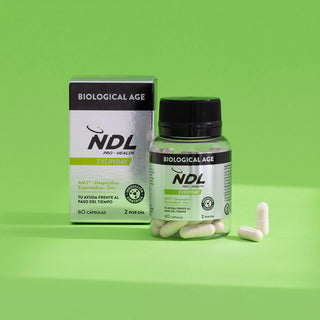

UN MARCHIO DI RAFA NADAL E CANTABRIA LABS
UN MARCHIO DI RAFA NADAL E CANTABRIA LABS
Spedizione gratuita in Italia a partire da 24,95€
UN MARCHIO DI RAFA NADAL E CANTABRIA LABS
UN MARCHIO DI RAFA NADAL E CANTABRIA LABS
Spedizione gratuita in Italia a partire da 24,95€
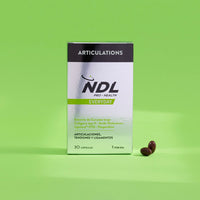
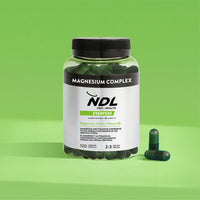
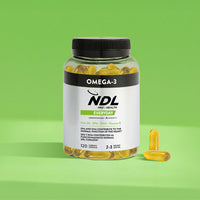
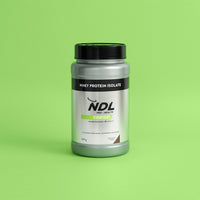

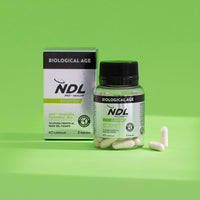
Il tuo carrello è vuoto
Integratore alimentare a base di tecnologia i (AM3®), zinco ed esperidina.
L'AM3 è composto da glucomannano e proteine di soia, una tecnologia brevettata da Cantabria Labs.
Con esperidina, un flavonoide presente in alte concentrazioni negli agrumi.
Tutti i prodotti NDL Pro-Health soddisfano i più severi criteri di qualità.
Assumere 2 capsule al giorno. Assumere con un bicchiere d'acqua.
INGREDIENTI |
MG/CAP |
FUNZIONALITÀ |
VNR |
AM3 – P (20 %) |
150 |
Attività immunoregolatoria |
* |
Fosfato di calcio 2-idrato |
299,07 |
Eccipiente |
* |
Solfato di zinco |
8,33 |
Manutenzione delle ossa |
60% |
Esperidina |
50 |
Antiossidante e antinfiammatorio |
* |
Spermidina |
0,6 |
Antiossidante e antinfiammatorio |
* |
Talco |
25 |
Eccipiente |
* |
*NRV: Valore Nutrizionale di Riferimento
NDL PRO HEALTH Articolazioni non contiene sostanze incluse nella Lista proibita WADA né nella sua composizione né nel processo di produzione.
AM3: la tecnologia AM3 è un ingrediente ottenuto dall'associazione non covalente di un polisaccaride α-glucomannano fosforilato e di una proteina di soia, stabilizzato da una matrice inorganica di fosfato e solfati di calcio e utilizzato come integratore alimentare con il nome di Inmunoferon®. È altamente biodisponibile in quanto resistente alla degradazione enzimatica e al pH dello stomaco e non viene alterato dal metabolismo epatico o dal sistema di coniugazione epatica.
POLIAMMINE (SPERMIDINA): le poliammine come la putrescina e la spermidina sono policazioni bioattive in grado di modulare molte vie di segnalazione. Pertanto, queste poliammine, molto ubiquitarie in quanto presenti in tutte le cellule viventi, sono coinvolte in tutta una serie di processi biologici, principalmente legati alla vitalità, alla proliferazione e alla differenziazione cellulare.
ESPERIDINA: i flavonoidi sono sostanze bioattive presenti soprattutto nella frutta e nella verdura, con oltre 15.000 molecole identificate in questa famiglia(27). Uno dei flavonoidi più noti è l'esperidina, presente in alte concentrazioni negli agrumi. Quando l'esperidina raggiunge l'intestino, la flora batterica la converte in esperetina, il principale metabolita dell'esperidina(28).
NDL PRO HEALTH Biological Age non contiene sostanze incluse nella Lista proibita WADA né nella sua composizione né nel processo di produzione.
Non superare la dose giornaliera espressamente raccomandata. Gli integratori alimentari non devono sostituire una dieta varia ed equilibrata e uno stile di vita sano. Tenere fuori dalla portata dei bambini piccoli. Adatto ai celiaci. Conservare in luogo fresco e asciutto, al riparo dalla luce, da fonti di calore localizzate e dai raggi solari. La data di scadenza indicata si riferisce alla corretta conservazione del prodotto nella confezione originale.
1. Fernández-Lázaro D, Fernandez-Lazaro CI, Mielgo-Ayuso J, Adams DP, García Hernández JL, González-Bernal J, et al. Glycophosphopeptical AM3 Food Supplement: A Potential Adjuvant in the Treatment and Vaccination of SARS-CoV-2. Front Immunol. 2021;12:698672.
2. Alvarez-Mon M, Miravitlles M, Morera J, Callol L, Alvarez-Sala JL. Treatment with the immunomodulator AM3 improves the health-related quality of life of patients with COPD”. Chest. 2005;127(4):1212-8.
3. Rojo JM, Rejas MT, Ojeda G. Enhancemente of lymphocyte proliferation, interleukin-2 production and NK activity by inmunoferon (AM3), a fungal immunomodulator: variations in normal and immunosuppressed mice. Int J Immunopharmacol. 1986;8:593-7.
4. Moya P, Baixeras E, Barasoain I. Immunoferon (AM3) enhances the activities of early-type interferón inducers and natural killer cells. Immunopharmacol Immunotoxicol. 1987;9:243-56.
5. A SP, JA G, F S. Immunologic clinical evaluation of a biological response modifier, AM3. En: in the treatment of childhood infectious respiratory pathologyAllergol Immunophatol. 1992. p. 35-9.
6. Rios MA BR, P J. Preliminary reporto n the efficacy of a biological response modifier (AM3) in the treatmenbt of chronic hepatitis B. Com Inv Clin Lat Am Mex. 1992;12:16-25,.
7. Serrano-Gomez D, Martinez-Nuñez RT, E SF. AM3 modulates dendritic cell pathogen recognition capabilities by targeting DC-sign. Antimicrob Agents Chemother. 2007;51(7):2313-23.
8. Martín-Vilchez S, Molina-Jiménez F, Alonso-Lebrero JL, Sanz-Cameno P, Rodríguez-Muñoz Y, Benedicto I, et al. AM3, a natural glycoconjugate, induces the functional maturation of human dendritic cells. Br J Pharmacol. junio de 2008;154(3):698-708.
9. E SLP, A C. AM3, anadjuvant to hepatitis B revaccination in non-responder healthy persons. J Hepatol. 1995;22:119-121,.
10. Villarrubia VG, Moreno MC, Calvo C, Gonzalez S, Alvarez-Mon M. The immunosenescent phenotype in mice and humans can be defined by alterations in the natural immunity reversal by immunomodulation with oral AM3. Immunopharmacol Immunotoxicol. 1997;19(1):53-74.
11. Pedro BS, JM BSP, L S. Immunostimulatory activity of lifespan-extending agents. Aging. 2013;5(11):793-801.
12. Larque E, Sabater-Molina M, Zamora S. Biological significance of dietary polyamines. Nutrition. 2007;23(1):87-95.
13. Ramani D, Bandt JP, Cynober L. Aliphatic polyamines in physiology and diseases. Clin Nutr. 2014;33(1):14-22.
14. Hesterber RS, Cleveland JL, Epling-Burnette PK. Role of polyamines in immune cell functions. Med Sci. 6(1).
15. Handa AK, Fatima T, Mattoo AK. Polyamines: bio-molecules with diverse functions in plants and human health and disease. Front Chem. 2018;6(10).
16. Muñoz-Esparza 2019; Muñoz-Esparza NC CBO Latorre Moratalla ML et al. Polyamines in food. Front Nutr. 2019;6(108).
17. Ramos-Molina B, Queipo-Ortuño MI, Lambertos A, Tinahone FJ, Peñafiel R. Dietary and gut microbiota polyamines in obesity-and age-related diseases. Front Nutr. 2019;6(24).
18. Nakanishi S, Cleveland JL. Polyamine homeostasis in development and disease. Vol. 9.
19. Sagar NA, Tarafdar S, Agarwal S, Tarafdar A, Sharma S. Polyamines: funtions, metabolism, and role in human disease management. Med Sci. 2021;9(44).
20. Negrel S, Brunel JM. Synthesis and biological activities of naturally functionalized polyamines: an overview. Curr Med Chem. 2021;28(17):3406-48.
21. Madeo F, Eisenberg T, Pietrocola F, Kroemer G. Spermidine in health and disease. Science. 26 de enero de 2018;359(6374):eaan2788.
22. Stacchiotti A, Corsetti G. Natural compounds and autophagy: allies against neurodegeneration. Front Cell Dev Biol. 2020;8:555409.
23. Soda K. Overview of Polyamines as Nutrients for Human Healthy Long Life and Effect of Increased Polyamine Intake on DNA Methylation. Cells. 4 de enero de 2022;11(1):164.
24. Zhang M, Wang H, Tracey KJ. Regulation of macrophage activation and inflammation by spermine: a new chapter in an old story. Crit Care Med. 2000;28(4):60-6.
25. Latour YL, Gobert AP, Wilson KT. The role of polyamines in the regulation of macrophage polarization and function. Amino Acids. 2020;52(2):151-60.
26. Proietti E, Rossini S, Grohmann U, Mondanelli G. Polyamines and kynurenines at the intersection of immune modulation. Trend Immunol. 2020;41(11):1037-50.
27. Barreca D, Gattuso G, Bellocco E, Calderaro A, Trombetta D, Smeriglio A, et al. Flavanones: Citrus phytochemical with health-promoting properties. Biofactors. 2017;43(4):495-506.
28. Mas-Capdevila A, Teichenne J, Domenech-Coca C, Caimari A, Del Bas JM, Escoté X, et al. Effect of Hesperidin on Cardiovascular Disease Risk Factors: The Role of Intestinal Microbiota on Hesperidin Bioavailability. Nutrients. 2020;12(5):1488.
29. Xiong H, Wang J, Ran Q, Lou G, Peng C, Gan Q, et al. Hesperidin: A Therapeutic Agent For Obesity. Drug Devel Ther. 2019;13:3855-66.
30. Tejada S, Pinya S, Martorell M, Capó X, Tur JA, Pons A, et al. Potential Anti-inflammatory Effects of Hesperidin from the Genus Citrus. Curr Med Chem. 2018;25(37):4929-45.
31. Hajialyani M, Hosein Farzaei M, Echeverría J, Nabavi SM, Uriarte E, Sobarzo-Sánchez E. Hesperidin as a Neuroprotective Agent: A Review of Animal and Clinical Evidence. Molecules. 2019;24(3).
32. Li C, Schluesener H. Health-promoting effects of the citrus flavanone hesperidin. Crit Rev Food Sci Nutr. 2017;57(3):613-31.
33. Li Y, Kandhare AD, Mukherjee AA, Bodhankar SL. Acute and sub-chronic oral toxicity studies of hesperidin isolated from orange peel extract in Sprague Dawley rats. Regul Toxicol Pharmacol. 2019;105:77-85.
34. Estruel-Amades S, Massot-Cladera M, Pérez-Cano FJ, Franch À, Castell M, Camps-Bossacoma M. Hesperidin Effects on Gut Microbiota and Gut-Associated Lymphoid Tissue in Healthy Rats. Nutrients. 2019;11(2).
35. Camps-Bossacoma M, Franch À, Pérez-Cano FJ, Castell M. Influence of Hesperidin on the Systemic and Intestinal Rat Immune Response. Nutrients. 2017;9(6).
36. Homayouni F, Haidari F, Hedayati M, Zakerkish M, Ahmadi K. Hesperidin Supplementation Alleviates Oxidative DNA Damage and Lipid Peroxidation in Type 2 Diabetes: A Randomized Double-Blind Placebo-Controlled Clinical Trial. Phytother Res. 2017;31(10):1539-45.
Biological Age
Avete bisogno di aiuto per affrontare il passare del tempo?
NDL Pro-Health Biological Age è un integratore alimentare contenente la tecnologia AM3® e rinforzato con zinco, un minerale che aiuta a proteggere le cellule dallo stress ossidativo e sostiene il normale funzionamento del sistema immunitario.Un marchio di Rafa Nadal e Cantabria Labs

Spedizione gratuita in Italia a partire da 24,95€
Pagamento sicuro

Aggiungere un prodotto al carrello...
Integratore alimentare a base di tecnologia i (AM3®), zinco ed esperidina.
L'AM3 è composto da glucomannano e proteine di soia, una tecnologia brevettata da Cantabria Labs.
Con esperidina, un flavonoide presente in alte concentrazioni negli agrumi.
Tutti i prodotti NDL Pro-Health soddisfano i più severi criteri di qualità.
Assumere 2 capsule al giorno. Assumere con un bicchiere d'acqua.
INGREDIENTI |
MG/CAP |
FUNZIONALITÀ |
VNR |
AM3 – P (20 %) |
150 |
Attività immunoregolatoria |
* |
Fosfato di calcio 2-idrato |
299,07 |
Eccipiente |
* |
Solfato di zinco |
8,33 |
Manutenzione delle ossa |
60% |
Esperidina |
50 |
Antiossidante e antinfiammatorio |
* |
Spermidina |
0,6 |
Antiossidante e antinfiammatorio |
* |
Talco |
25 |
Eccipiente |
* |
*NRV: Valore Nutrizionale di Riferimento
NDL PRO HEALTH Articolazioni non contiene sostanze incluse nella Lista proibita WADA né nella sua composizione né nel processo di produzione.
AM3: la tecnologia AM3 è un ingrediente ottenuto dall'associazione non covalente di un polisaccaride α-glucomannano fosforilato e di una proteina di soia, stabilizzato da una matrice inorganica di fosfato e solfati di calcio e utilizzato come integratore alimentare con il nome di Inmunoferon®. È altamente biodisponibile in quanto resistente alla degradazione enzimatica e al pH dello stomaco e non viene alterato dal metabolismo epatico o dal sistema di coniugazione epatica.
POLIAMMINE (SPERMIDINA): le poliammine come la putrescina e la spermidina sono policazioni bioattive in grado di modulare molte vie di segnalazione. Pertanto, queste poliammine, molto ubiquitarie in quanto presenti in tutte le cellule viventi, sono coinvolte in tutta una serie di processi biologici, principalmente legati alla vitalità, alla proliferazione e alla differenziazione cellulare.
ESPERIDINA: i flavonoidi sono sostanze bioattive presenti soprattutto nella frutta e nella verdura, con oltre 15.000 molecole identificate in questa famiglia(27). Uno dei flavonoidi più noti è l'esperidina, presente in alte concentrazioni negli agrumi. Quando l'esperidina raggiunge l'intestino, la flora batterica la converte in esperetina, il principale metabolita dell'esperidina(28).
NDL PRO HEALTH Biological Age non contiene sostanze incluse nella Lista proibita WADA né nella sua composizione né nel processo di produzione.
Non superare la dose giornaliera espressamente raccomandata. Gli integratori alimentari non devono sostituire una dieta varia ed equilibrata e uno stile di vita sano. Tenere fuori dalla portata dei bambini piccoli. Adatto ai celiaci. Conservare in luogo fresco e asciutto, al riparo dalla luce, da fonti di calore localizzate e dai raggi solari. La data di scadenza indicata si riferisce alla corretta conservazione del prodotto nella confezione originale.
1. Fernández-Lázaro D, Fernandez-Lazaro CI, Mielgo-Ayuso J, Adams DP, García Hernández JL, González-Bernal J, et al. Glycophosphopeptical AM3 Food Supplement: A Potential Adjuvant in the Treatment and Vaccination of SARS-CoV-2. Front Immunol. 2021;12:698672.
2. Alvarez-Mon M, Miravitlles M, Morera J, Callol L, Alvarez-Sala JL. Treatment with the immunomodulator AM3 improves the health-related quality of life of patients with COPD”. Chest. 2005;127(4):1212-8.
3. Rojo JM, Rejas MT, Ojeda G. Enhancemente of lymphocyte proliferation, interleukin-2 production and NK activity by inmunoferon (AM3), a fungal immunomodulator: variations in normal and immunosuppressed mice. Int J Immunopharmacol. 1986;8:593-7.
4. Moya P, Baixeras E, Barasoain I. Immunoferon (AM3) enhances the activities of early-type interferón inducers and natural killer cells. Immunopharmacol Immunotoxicol. 1987;9:243-56.
5. A SP, JA G, F S. Immunologic clinical evaluation of a biological response modifier, AM3. En: in the treatment of childhood infectious respiratory pathologyAllergol Immunophatol. 1992. p. 35-9.
6. Rios MA BR, P J. Preliminary reporto n the efficacy of a biological response modifier (AM3) in the treatmenbt of chronic hepatitis B. Com Inv Clin Lat Am Mex. 1992;12:16-25,.
7. Serrano-Gomez D, Martinez-Nuñez RT, E SF. AM3 modulates dendritic cell pathogen recognition capabilities by targeting DC-sign. Antimicrob Agents Chemother. 2007;51(7):2313-23.
8. Martín-Vilchez S, Molina-Jiménez F, Alonso-Lebrero JL, Sanz-Cameno P, Rodríguez-Muñoz Y, Benedicto I, et al. AM3, a natural glycoconjugate, induces the functional maturation of human dendritic cells. Br J Pharmacol. junio de 2008;154(3):698-708.
9. E SLP, A C. AM3, anadjuvant to hepatitis B revaccination in non-responder healthy persons. J Hepatol. 1995;22:119-121,.
10. Villarrubia VG, Moreno MC, Calvo C, Gonzalez S, Alvarez-Mon M. The immunosenescent phenotype in mice and humans can be defined by alterations in the natural immunity reversal by immunomodulation with oral AM3. Immunopharmacol Immunotoxicol. 1997;19(1):53-74.
11. Pedro BS, JM BSP, L S. Immunostimulatory activity of lifespan-extending agents. Aging. 2013;5(11):793-801.
12. Larque E, Sabater-Molina M, Zamora S. Biological significance of dietary polyamines. Nutrition. 2007;23(1):87-95.
13. Ramani D, Bandt JP, Cynober L. Aliphatic polyamines in physiology and diseases. Clin Nutr. 2014;33(1):14-22.
14. Hesterber RS, Cleveland JL, Epling-Burnette PK. Role of polyamines in immune cell functions. Med Sci. 6(1).
15. Handa AK, Fatima T, Mattoo AK. Polyamines: bio-molecules with diverse functions in plants and human health and disease. Front Chem. 2018;6(10).
16. Muñoz-Esparza 2019; Muñoz-Esparza NC CBO Latorre Moratalla ML et al. Polyamines in food. Front Nutr. 2019;6(108).
17. Ramos-Molina B, Queipo-Ortuño MI, Lambertos A, Tinahone FJ, Peñafiel R. Dietary and gut microbiota polyamines in obesity-and age-related diseases. Front Nutr. 2019;6(24).
18. Nakanishi S, Cleveland JL. Polyamine homeostasis in development and disease. Vol. 9.
19. Sagar NA, Tarafdar S, Agarwal S, Tarafdar A, Sharma S. Polyamines: funtions, metabolism, and role in human disease management. Med Sci. 2021;9(44).
20. Negrel S, Brunel JM. Synthesis and biological activities of naturally functionalized polyamines: an overview. Curr Med Chem. 2021;28(17):3406-48.
21. Madeo F, Eisenberg T, Pietrocola F, Kroemer G. Spermidine in health and disease. Science. 26 de enero de 2018;359(6374):eaan2788.
22. Stacchiotti A, Corsetti G. Natural compounds and autophagy: allies against neurodegeneration. Front Cell Dev Biol. 2020;8:555409.
23. Soda K. Overview of Polyamines as Nutrients for Human Healthy Long Life and Effect of Increased Polyamine Intake on DNA Methylation. Cells. 4 de enero de 2022;11(1):164.
24. Zhang M, Wang H, Tracey KJ. Regulation of macrophage activation and inflammation by spermine: a new chapter in an old story. Crit Care Med. 2000;28(4):60-6.
25. Latour YL, Gobert AP, Wilson KT. The role of polyamines in the regulation of macrophage polarization and function. Amino Acids. 2020;52(2):151-60.
26. Proietti E, Rossini S, Grohmann U, Mondanelli G. Polyamines and kynurenines at the intersection of immune modulation. Trend Immunol. 2020;41(11):1037-50.
27. Barreca D, Gattuso G, Bellocco E, Calderaro A, Trombetta D, Smeriglio A, et al. Flavanones: Citrus phytochemical with health-promoting properties. Biofactors. 2017;43(4):495-506.
28. Mas-Capdevila A, Teichenne J, Domenech-Coca C, Caimari A, Del Bas JM, Escoté X, et al. Effect of Hesperidin on Cardiovascular Disease Risk Factors: The Role of Intestinal Microbiota on Hesperidin Bioavailability. Nutrients. 2020;12(5):1488.
29. Xiong H, Wang J, Ran Q, Lou G, Peng C, Gan Q, et al. Hesperidin: A Therapeutic Agent For Obesity. Drug Devel Ther. 2019;13:3855-66.
30. Tejada S, Pinya S, Martorell M, Capó X, Tur JA, Pons A, et al. Potential Anti-inflammatory Effects of Hesperidin from the Genus Citrus. Curr Med Chem. 2018;25(37):4929-45.
31. Hajialyani M, Hosein Farzaei M, Echeverría J, Nabavi SM, Uriarte E, Sobarzo-Sánchez E. Hesperidin as a Neuroprotective Agent: A Review of Animal and Clinical Evidence. Molecules. 2019;24(3).
32. Li C, Schluesener H. Health-promoting effects of the citrus flavanone hesperidin. Crit Rev Food Sci Nutr. 2017;57(3):613-31.
33. Li Y, Kandhare AD, Mukherjee AA, Bodhankar SL. Acute and sub-chronic oral toxicity studies of hesperidin isolated from orange peel extract in Sprague Dawley rats. Regul Toxicol Pharmacol. 2019;105:77-85.
34. Estruel-Amades S, Massot-Cladera M, Pérez-Cano FJ, Franch À, Castell M, Camps-Bossacoma M. Hesperidin Effects on Gut Microbiota and Gut-Associated Lymphoid Tissue in Healthy Rats. Nutrients. 2019;11(2).
35. Camps-Bossacoma M, Franch À, Pérez-Cano FJ, Castell M. Influence of Hesperidin on the Systemic and Intestinal Rat Immune Response. Nutrients. 2017;9(6).
36. Homayouni F, Haidari F, Hedayati M, Zakerkish M, Ahmadi K. Hesperidin Supplementation Alleviates Oxidative DNA Damage and Lipid Peroxidation in Type 2 Diabetes: A Randomized Double-Blind Placebo-Controlled Clinical Trial. Phytother Res. 2017;31(10):1539-45.
Purchase options
Me gusta mucho!!
Hace meses que lo tomo y para mí es ya un imprescindible en mi rutina diaria. He tomado otros suplementos y ninguno es tan eficaz como este.
Lo noto en la piel y también internamente, nada de enfermedades ni resfriados.
Sin un análisis clínico anterior y posterior, es complicado observar la evolución.
Lo que sí puedo decir es que no me están sentando mal.
Sólo tomo una al día.
Llevo tomándolo desde el final del verano y prácticamente no me he puesto mala en todo este tiempo, cuando normalmente por estas fechas era un resfriado tras otro. Me siento más fuerte y con el sistema inmune muy mejorado. Muy contenta.
Llevo poco tiempo, cuando haga los tres meses podre evaluar el resultado.
Combinarlo con

